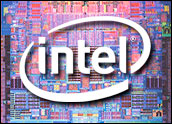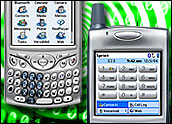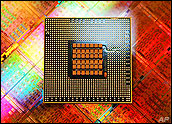
The days of the spinning disk hard drive seem to be numbered as Intel Tuesday joined the growing field of companies offering solid state flash memory drives that claim to be faster, quieter and more power efficient.
The new Intel unit, named the “Z-U130 Value Solid-State Drive,” is based on NAND flash memory, a type of solid state memory — commonly used in digital cameras and MP3 players — that is less expensive to produce than NOR, the other type of flash memory.
The first Intel flash drive will connect to motherboards with a USB interface, but the company noted its forthcoming “family” of flash units will come in various “industry standard interfaces.”
Starting Small
The first drives being shipped are small in capacity, at 1 GB and 2 GB. Next will come 4 GB and 8 GB units. Intel reportedly plans to ship models with capacities of 20 GB and 40 GB later this year, and units of 80 GB and 160 GB density next year.
Intel’s release comes close on the heels of last week’s announcement by Samsung of new 80 GB, 120 GB and 160 GB hybrid hard drives, designed for notebook computers, that match flash memory with spinning disk drives. In January, SanDisk announced a 32 GB solid-state disk drive.
However, there is skepticism about using flash for long-term storage of important data. “I think there certainly are clear cases for flash memory,” Enterprise Strategy Group Analyst Brian Babineau told TechNewsWorld. “Flash is more portable, the densities are increasing and performances are relatively stable. But you still can’t replace … standard disk drives.”
Babineau likes the hybrid approach taken by Samsung, where the speed and efficiency of flash memory is mated to the capacity and proven reliability of spinning magnetic disks. “I think the hybrid is a pretty good approach,” he said.
Proven Stamina
Intel seems to be trying to differentiate its drives from its competitors’ by stressing reliability.
“Intel’s Z-U130 Value Solid State Drive will be distinguished from other solid state product offerings by its extensive validation, including more than 1,000 hours of accelerated reliability testing, and is expected to meet an average mean time between failure (MTBF) specification of 5 million hours,” the company stated.
The drives have “fast reads” of 28 MB per second and write speeds of 20 MB per second, according to Intel, adding that the units offer “a faster storage alternative that speeds through common PC or embedded application operations such as locating boot code, operating systems and commonly accessed libraries.”
Intel expects the drives will also be used in Intel-based servers, “emerging market” notebooks (such as the Intel “Classmate PC” being developed to compete with the flash memory and AMD processor-based One Laptop Per Child notebooks currently being built) and low-cost PCs. “In addition, it will be used in Intel embedded solutions for routers and point of sale terminals,” it said.
Capacity Challenge
Spinning disk drives will eventually be overcome by flash technology, but not for a number of years, Brian Matas, vice president of market research at IC Insights, told TechNewsWorld.
“It seems like every time you get the potential for NAND flash to serve as a replacement for spinning disk drives, the folks in the spinning disk part of the business are able to make some huge advancement in the amount of density they can cram onto that media,” Matas pointed out.
“There is going to come a time when NAND flash becomes a very viable option to rotating media, and Intel’s getting on that floor now is a good thing. It may take five years or so to get the equivalent density storage for same dollar value,” he concluded.



















































